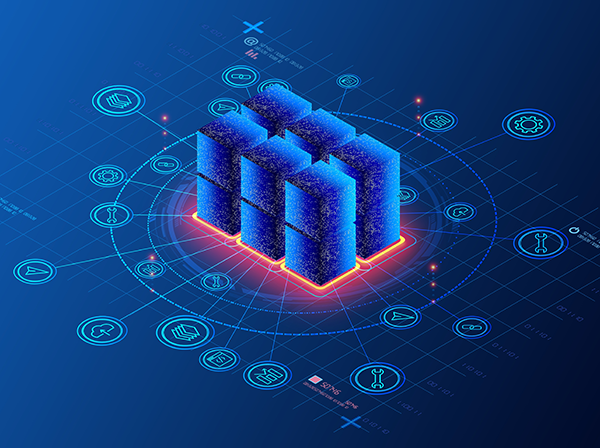Trends in database management for 2024 have taken several different directions, ranging from cloud-based DBMSs (database management systems) to augmented DBMSs to self-driving DBMSs (which are quite different from self-driving cars). The use of cloud-supported database management systems is one of the most obvious trends.
Another broad noteworthy trend is the use of multiple databases. Some of the larger cloud service providers offer several database management systems, assuring their clients can meet their goals. Several businesses are using combinations of different database systems, for example data warehouses and NoSQL databases. As a consequence, many database administrators are currently supervising multiple database systems, as well as multiple cloud accounts.
Databases have evolved quite a bit since their beginnings in the early 1960s.
Historically, DBMSs were used to save and organize a business’s data. The early “simple” databases were the hierarchical database (a tree-like model based one-to-many relationships design) and the network database (a model allowing for multiple relationships).
Relational databases became popular in the 1980s, which were followed by object-oriented databases during the 1990s. Today, cloud databases are steadily breaking new ground in how data is gathered, stored, managed, and used.
Additional new trends in database management are listed below.
- Self-driving databases
- Augmented database Mmanagement systems
- Analytic databases
- In-memory databases
- Graph databases
- Bridging SQL and NoSQL
Database management has become a crucial activity for many businesses. It is used to store and maintain enormous amounts of data in an efficient manner. The use of database management helps to ensure that business analysts receive data that is current and reliable. Different databases have different specific features and strengths, and these differences determine which database should be used for specific projects.
As the internet becomes more and more popular as a way to do business, the use of database management systems continues to evolve.
Autonomous or Self-Driving Database Management Systems
A new type of database, called a self-driving database (also known as an autonomous database) is cloud-based and uses machine learning techniques to automate database security, backups, updates, tuning, and other routine tasks that have traditionally been performed by humans.
Autonomous databases will help to eliminate cyberattacks on unencrypted databases, and are self-repairing. This prevents downtime, including unplanned maintenance.
Augmented Database Management Systems
Augmented database management systems are a step up from self-driving databases, and apply the power of both artificial intelligence and machine learning. Augmented databases automate complex tasks: Data Quality inspections, data cleansing, detecting anomalies in the data, and data mining. The goal of these AI algorithms is to simplify and optimize Data Management processes, thereby improving efficiency and better decision-making.
Augmented database management can also have a positive impact on master data management, Data Governance initiatives, and data integration.
Analytic Database Management Systems
An “analytic database management system” is a cloud-built DBMS designed specifically for collecting and managing data for analytics. It often relies on a database in the form of a data warehouse.
More and more, analytic databases are being used for analyzing data and providing business-related insights. An analytic database, also referred to as an analytical database, uses a read-only system that saves historical business metrics data (for example, inventory levels and sales performance). This type of database is regularly updated with recent transaction data, allowing business analysts, appropriate staff, and even executives, to run queries and develop reports.
An analytic database is designed specifically for developing business intelligence and supporting analytic applications.
Real-Time Analytics Database Management Systems
Although data warehouses are excellent for storage and basic analytics, they are not designed for real-time analytics. Real-time analytics databases are designed to be extremely flexible when working with different data formats, and to process large amounts of data, very quickly. Businesses dealing with their customers over the internet, and IOT devices, are the primary ways of using real-time analytics. Real-time analytics analyzes data as soon as it enters the system and provides a response.
Speed is the primary benefit gained from real-time data analytics. The faster a business accesses and processes data, the faster it can use that data for communicating with customers currently on the website, and for business intelligence and insights.
In-Memory Database Management Systems
In-memory databases send data directly into the computer’s main memory (also known as RAM), which eliminates disk-based storage and provides extremely fast response times. In-memory databases can be used to create applications that deliver exceptional user experiences in industries such as gaming, banking, and travel. By relying on RAM, and eliminating disk-based memories, latency is reduced and performance is improved.
A significant concern with in-memory databases is that the data will be lost if it is accidentally shut down, or there is a power outage.
Graph Database Management Systems
The use of graph Database Management systems provides models showing relationships. In a graph database, data entities are represented as nodes and relationships are represented as edges. Graph databases offer a natural and efficient way to analyze intricate data connections. Graph databases are often used by social networks, fraud detection, recommendation systems, and more.
Graph databases are very efficient for storage and querying complex data structures. As businesses continue to collect more and more complex data, graph databases have the potential to become more useful in managing and processing it.
A primary strength of graph Database Management systems is that relationships are the highest priority. In the graph databases, the relationships between data entities are as important as the individual data points, or nodes. (Graph databases are being used to support AI.)
Bridging SQL and NoSQL Database Management Systems
Both data warehouses and data lakehouses can act as bridges, supplying seamless access to both NoSQL and SQL databases. This integration allows researchers to use each system’s strengths, combining unstructured and structured data to provide insights and support the development of applications.
Additionally, NewSQL databases are being used to bridge NoSQL and SQL. NewSQL improves on SQL databases by supplying horizontal scalability, while also maintaining ACID (atomicity, consistency, isolation, and durability) properties.
A Note on ChatGPT and Database Management
Currently, ChatGPT is not being used for database management. ChatGPT relies heavily on generative AI, which supports creativity, but is not designed for processes supporting Data Quality. However, we should not be limited by our preconceptions. The uses of ChatGPT are still being explored. There are some surprising results, and there should be more in the near future. MongoDB, for instance, recently announced a new generative AI that is designed to help developers build applications more quickly and easily.
The Future of Database Management
The future developments in database technology have the potential to deliver unprecedented performance and scalability. Different databases use different storage systems and organize data in different ways. However, there are efforts to develop “universalized” databases. Examples of this line of evolution for databases are:
- Universal memory: Rather than relying on different forms of data storage (RAM, ROM, and hard drives) it uses a single form of memory. With a universal memory, data can be accessed and processed more quickly.
- The converged database: This type of database handles multiple data models – for example relational, document, graph, and key-value – integrating them into a single platform. The converged database will offer more freedom in organizing and using data. Converged databases have the potential to offer the benefits of each database.
Image used under license from Shutterstock



